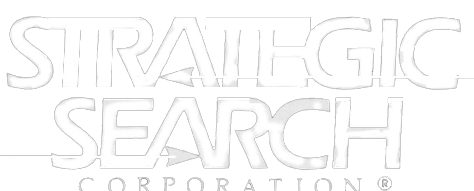
Internet of Things (IoT) is daily impacting our lives and industries. However, what exactly is IoT? What is the history of Internet of Things?
The text book definition of Internet of Things is the wireless connectivity framework that exchanges data from inanimate devices to humans, with limited human interaction. Simply stated Internet of Things involves providing Internet connectivity to the most common objects.
Our recruiting firm is on the cutting-edge IoT trends, which means we will attract the best and brightest Internet of Things minds for you!
How important is IoT? A new report shows that the global IoT market will almost double in value over the next five years, growing a compound rate (CAGR) of 13.5 percent per year over the period to $1.8 trillion in 2028.
Another example is IoT allows us to get weather forecasts or morning commute updates by voice commands to our smart speakers. We can see who’s on our doorsteps by launching smartphone apps connected to our security cameras.
Internet of things is proliferating all industries from engineering to manufacturing! Additionally, a recent technical report showed how it will revamp even retail operations! Another publication showed 7 ways that IoT will impact the telecommunications industry.
Thus, it is no wonder that job recruiting for Internet of Things technical, engineering, scientific, research and development (R&D), information technology (IT) and manufacturing technology talent is soaring. We can help you quickly staff the best and brightest IoT engineers, scientists and technical talent for your precise recruitment needs.
Here are the top 10 IoT OR Internet of Things companies https://technologymagazine.com/cloud-computing/top-10-iot-companies
So What Exactly Is Internet of Things?
To better understand IoT, you need to understand where the Internet of Things fits into the history of telecommunications and modern technology.
In the 20th century, telecommunications technology enabled us to hold conversations with each other at great distances with phones. In the 1980s, we started to connect personal computers (PCs) to the Internet. This was a new telecoms protocol at the time. We were able to share and access resources and information beyond simple voice data across vast distances really quickly.
Apple changed the world with the iPhone starting in the early 21st century. They enabled us everyday citizens to hold the power of the Internet in the palms of our hands while on the go. The mobile generation was truly born.
We started seeing the value of being able to access the Internet from a whole range of smaller, mobile devices not long after the smartphone era began. We were not only able to “read” data from a whole range of objects but we could also “write” data—e.g. instructions—to them.
Here’s Where the Internet of Things (IoT) fits into the story!
The Internet of Things refers to the practice of connecting objects and devices to the Internet that previously were “outside” the reach of the Internet. As we’ve seen, until just a few years ago, the Internet was constrained to basically two things: computers and then cell phones. Now, we’re bringing a whole range of things online: cars, speakers (e.g. Alexa), home devices like refrigerators and washing machines, city municipal infrastructures, farming equipment, etc.
IoT enables citizens, businesses and governments to interact remotely and at scale with a host of once-disconnected objects (cars, tractors, whatever). It enables us to gather data from those objects, generate insights from that data and then (sometimes) send instructions back to those objects that help those objects better perform their tasks.
The Internet of Things gives us the power to connect the physical world around them to the Internet and to interact with it via a digital representation or “twin” of it.
Key Components of An IoT System
Hardware
The essence of IoT is it consists of many, many interconnected devices. For example, sensors and actuators that enable you to sense (and sometimes control) the physical world around them.
In addition to network connectivity to transmit the data they collect, these devices require some basic processing and storage capabilities. This capability is often provided by a microcontroller, a system-on-a-chip (SoC), or a field-programmable gate array (FPGA).
Therefore recruiting quality hardware engineers is a must for any successful Internet of Things ecosystem.
Embedded Programming
IoT devices are also embedded devices. They may be prototyped using commoditized micro-controller platforms, such as Arduino, with custom printed circuit boards (PCBs) developed at a later stage.
Prototyping with these platforms requires circuit design skills, micro-controller programming as well as a deep understanding of hardware communication protocols such as serial, I2C, or SPI. These protocols are used to establish communication between the micro-controller and the connected sensors and actuators.
Therefore, recruitment of demonstrated embedded software engineers well versed in C++ or C, Python and JavaScript (for UIs and platforms) for prototyping and scaling IoT systems is a must.
Security
When recruiting an IoT engineer, scientist or technical professional, you must be aware of security. Security is one of the most critical concerns in Internet of Things and must be built-in at every step of the design of an IoT system.
The number of potential (and real) attack vectors grows with millions of new devices connected every day. With so much at stake, recruiting engineers with security skills is mission critical. These skills include threat assessment, ethical hacking, encryption, securing network architectures and applications, event monitoring, activity logging and threat intelligence.
Networking and Cloud Integration
Recruiting for network design and management are similarly vital in constructing for your IoT organization. This is the case due to the sheer volume of connected devices and because of the impact that network design decisions can have in deployed IoT systems at scale.
Connectivity enables devices to communicate with other devices as well as with applications and services that are running in the cloud. Although cloud computing and IoT are two very different technologies, real-time data streaming and cloud integration are crucial for the proper functioning of IoT.
Cloud infrastructure is used for data storage, processing and analysis, as well as for implementation of the business logic of IoT applications.
Data Analytics and Prediction
The number of IoT devices transmitting data increases on a daily basis, which turns big data into huge data. Developers will need to securely and reliably ingest, store, and query the vast quantities of heterogeneous data originating from these devices.
Many IoT devices generate latency- or time-sensitive data. Therefore it’s also useful to filter or discard irrelevant data at the edges of your network rather than sending everything up to your servers.
Thus it is imperative you recruit only the best and brightest data analysis engineers to help build and manage your Internet of Things systems.
AI and Machine Learning
Machine learning and AI are useful tools in an IoT system. They deliver value and make sense of the huge volume of data that is generated by IoT devices.
The techniques by which you teach a machine to learn by exposing it to tons of data about a situation can be applied in real-time, both to sensor data streams for predictive analysis and to make decisions autonomously in response to incoming data. Machine learning can also be applied to historical data to identify patterns or anomalies in the data that may allow you to make important decisions.
IoT and Industry
The impact of IoT on industrial ecosystems has resulted in the emergence of robust physical-cyber connectivity, often called the fourth industrial revolution, aka Industry 4.0. This is also referred to as the Industrial Internet of Things (or “IIoT”).
The connected ecosystem refers to physically connected industrial assets, including those on the manufacturing shop floor as well as connected logistics vehicles, processes and more.
To chose the best Internet of Things platform for your business, here is a list of the top 20 IoT Platforms and examples of each.
Call Us Today For Your IoT Staffing Needs
With the growth and impact of Internet of Things (IoT), it is important to work with an executive recruiting firm that both understands the IoT field and has connections to the right internet of things talent base you seek.
As an example, here are 10 steps we can offer you towards achieving IoT success.
We can help you achieve that success!
Strategic Search Corporation has a long track record in technical, engineering, scientific, IT, R&D and manufacturing recruiting since our inception in 1989. Furthermore, our founder, Scott Sargis, is regularly a media guest on the subject of IoT on WGN and CBS Radio. Therefore, Strategic Search Corporation can help you secure the key IoT talent you seek.
Give Scott a call at 312.944-4000 to learn more or click below to use our contact form.




